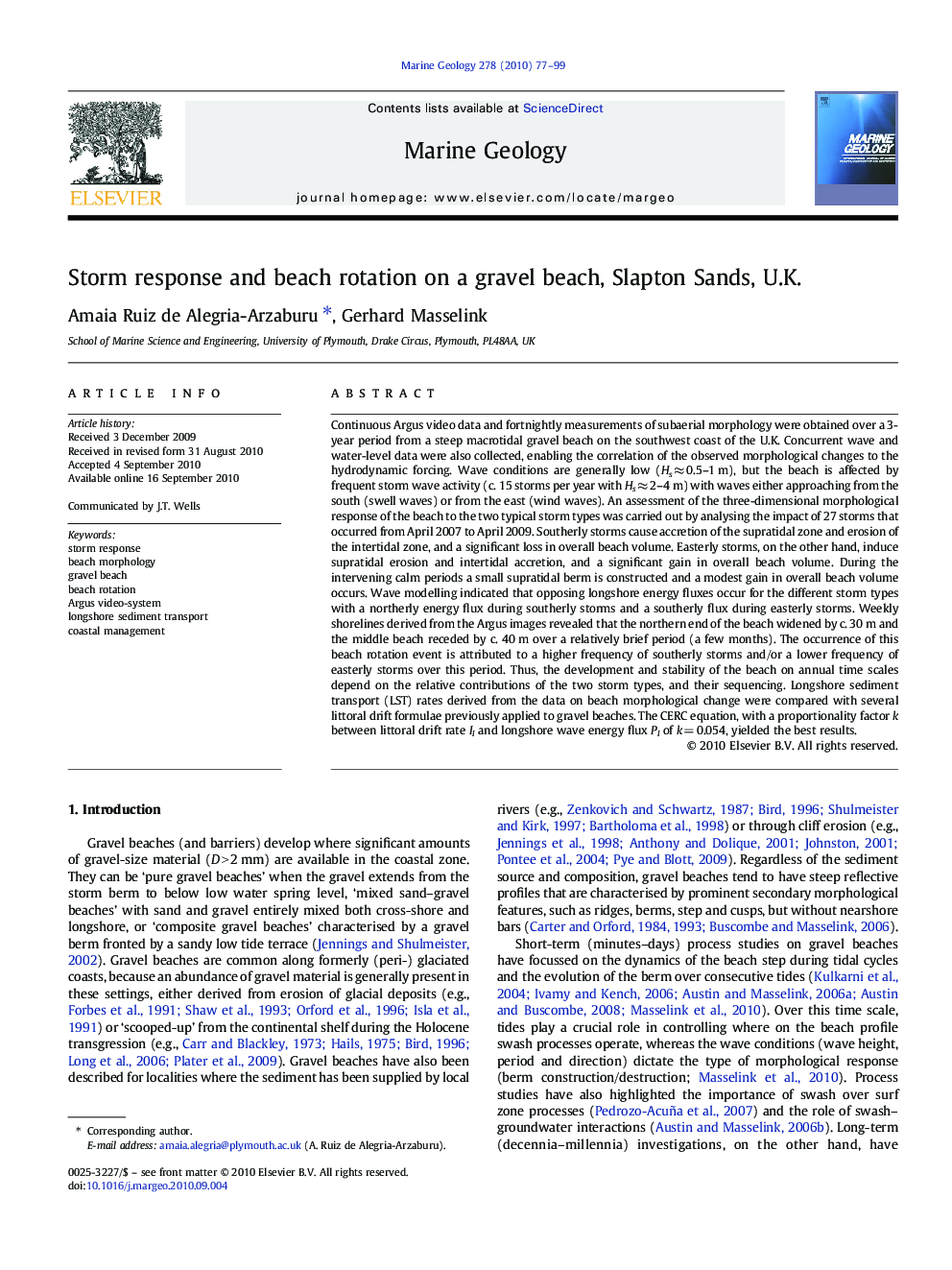| کد مقاله | کد نشریه | سال انتشار | مقاله انگلیسی | نسخه تمام متن |
|---|---|---|---|---|
| 4718826 | 1639143 | 2010 | 23 صفحه PDF | دانلود رایگان |

Continuous Argus video data and fortnightly measurements of subaerial morphology were obtained over a 3-year period from a steep macrotidal gravel beach on the southwest coast of the U.K. Concurrent wave and water-level data were also collected, enabling the correlation of the observed morphological changes to the hydrodynamic forcing. Wave conditions are generally low (Hs ≈ 0.5–1 m), but the beach is affected by frequent storm wave activity (c. 15 storms per year with Hs ≈ 2–4 m) with waves either approaching from the south (swell waves) or from the east (wind waves). An assessment of the three-dimensional morphological response of the beach to the two typical storm types was carried out by analysing the impact of 27 storms that occurred from April 2007 to April 2009. Southerly storms cause accretion of the supratidal zone and erosion of the intertidal zone, and a significant loss in overall beach volume. Easterly storms, on the other hand, induce supratidal erosion and intertidal accretion, and a significant gain in overall beach volume. During the intervening calm periods a small supratidal berm is constructed and a modest gain in overall beach volume occurs. Wave modelling indicated that opposing longshore energy fluxes occur for the different storm types with a northerly energy flux during southerly storms and a southerly flux during easterly storms. Weekly shorelines derived from the Argus images revealed that the northern end of the beach widened by c. 30 m and the middle beach receded by c. 40 m over a relatively brief period (a few months). The occurrence of this beach rotation event is attributed to a higher frequency of southerly storms and/or a lower frequency of easterly storms over this period. Thus, the development and stability of the beach on annual time scales depend on the relative contributions of the two storm types, and their sequencing. Longshore sediment transport (LST) rates derived from the data on beach morphological change were compared with several littoral drift formulae previously applied to gravel beaches. The CERC equation, with a proportionality factor k between littoral drift rate Il and longshore wave energy flux Pl of k = 0.054, yielded the best results.
Journal: Marine Geology - Volume 278, Issues 1–4, 15 December 2010, Pages 77–99